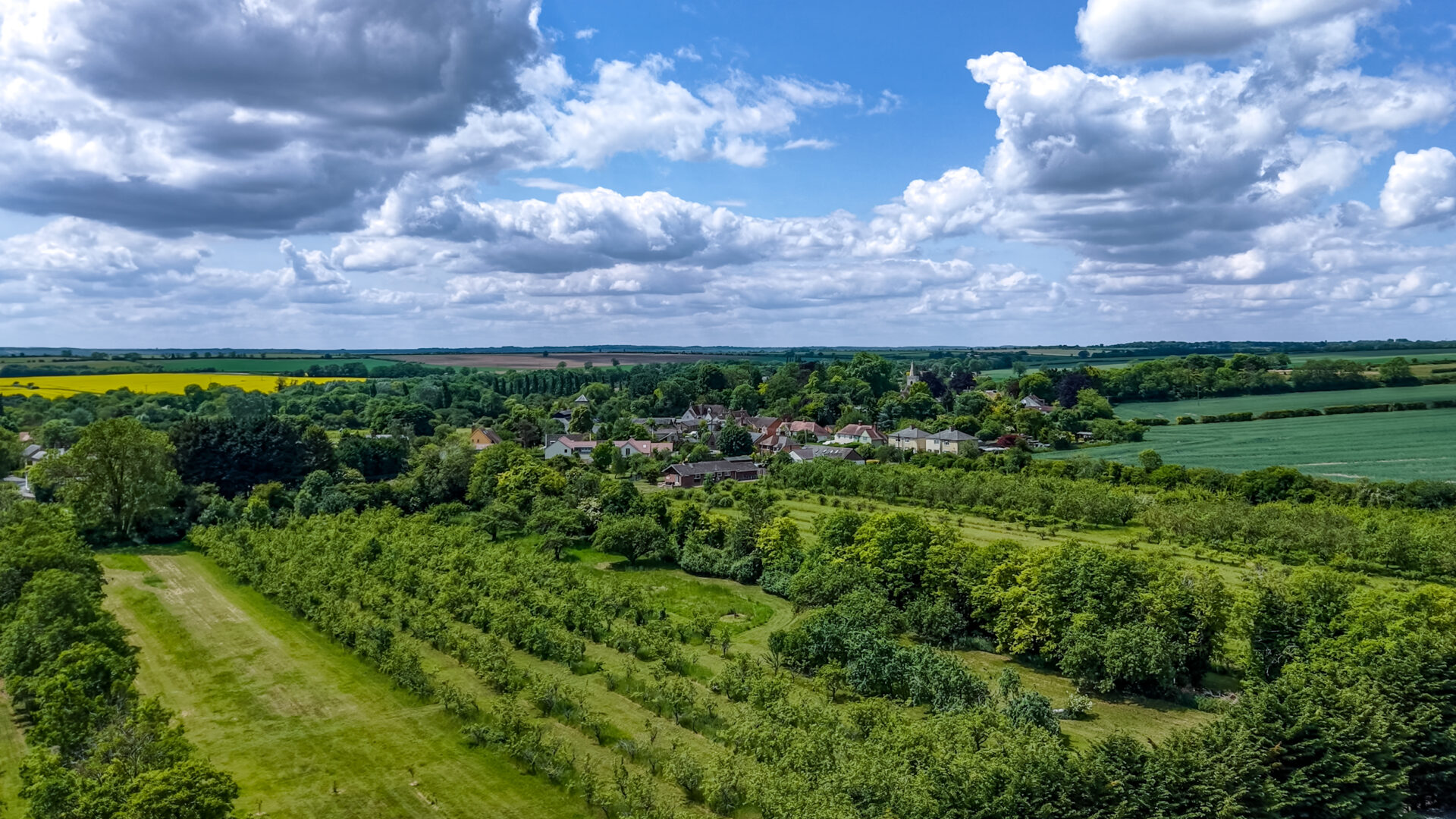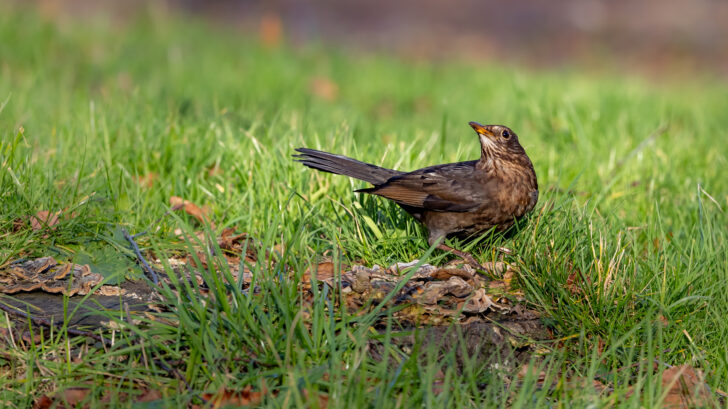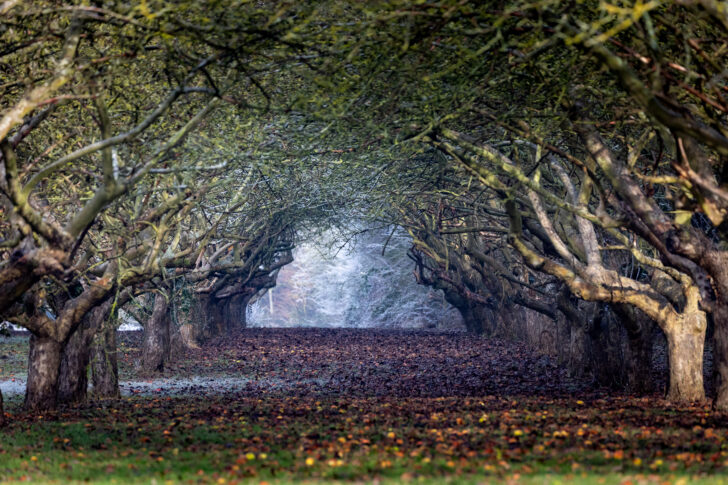Coton Orchard case study

The village of Coton sits in the South Cambridgeshire Green Belt between Cambridge and the new settlement of Cambourne, now continuing to expand rapidly on the site of WW2 Bourne airfield. The 60-acre Coton Orchard was once managed intensively to be highly productive back in the 1920s, when it sent apples far and wide via the local railway.
Back in the 1990s, Anna Gazeley’s father bought the orchard to save it from development. It reminded him of growing up in the area when such orchards were widespread and now it survives as a fragment of a once rich fruit-growing area. The orchard produces plentiful crops of fruit supplied on a commercial basis to local cider-makers Blue Barrell, as well as shared non-commercially with the community, charities and crucially, the wildlife this mosaic habitat supports.
But now the orchard is considered most precious for its heritage of trees and the variety and abundance of wildlife it supports. Its range of trees of all ages includes veterans such as the second largest Bramley apple tree recorded in the British Isles. The orchard hosts Queen Cox Apple trees planted both in 1952 and 2022 to commemorate the reign of HM Queen Elizabeth II from the coronation to her platinum jubilee which, along with 420 hedgerow trees, form part of the Queen’s Green canopy. Another 420 hedgerow trees have been added for the new King.
With its many mature and veteran trees, century-old Coton Orchard is what’s known as a Traditional Orchard. Nine in ten Traditional Orchards like Coton have been lost since the middle of the last century. They are a valuable but increasingly rare and threatened habitat and recognised as such in the UK Biodiversity Action Plan (BAP). The Government’s new Environmental Land Management schemes (ELMs) also now pay for such habitats to be managed carefully to protect them.
The value of the habitat at the orchard is not hard to see – the trees, hedgerows and managed scrub provide a rich foraging ground for wildlife. Recent surveys have revealed 8 species of bats, over 60 species of breeding birds and more than 230 species of invertebrates – moths and butterflies, beetles, bees, wasps and other bugs – with 15 of these nationally scarce. It is home to once common and now rare cuckoos and turtle doves as well as red kite, buzzard and kestrel. Species of mosses and lichens usually found in ancient woodlands over 400 years old have been discovered. With less intensive management – and no pesticides used since the 1990s – nature has gently reclaimed the orchard. Such is its value, the orchard has been designated a county wildlife site.

Importantly, its current custodian, Anna Gazeley, is keen to see the orchard continue to change and develop. The orchard is being sensitively managed with advice from the local Wildlife Trust, fruit trees are being replanted and others rejuvenated, fallen trees allowed to lay where they land, transforming into vital deadwood habitat. New trees are being planted to commemorate family, friends and the famous, but also to add more species, including a new grove of wild perry trees which will host grafts of perry pears to create a national heritage collection. One full time professional manages the orchard but with the help of many volunteers, experts and enthusiasts from near and far; local people cherish it and 15 come regularly from Coton village to help. It’s also a place of training and education: the orchard hosts pruning and conservation courses run by the East of England Orchard Project.
Sadly, the future of the orchard is now in doubt. Cambridgeshire County Council has proposed a new busway to link the new settlement at Cambourne with Cambridge city centre. The busway route follows the road from the town to Coton but then veers off across the countryside, splitting the orchard in two with a 40m-wide swathe of bus and cycle lanes. 1,600 new trees would be planted to replace those lost, but, as the People’s Trust for Endangered Species has pointed out, these will not compensate for the damage done to such a valuable habitat. Local people formed a Coton Busway Action Group (CBAG) to campaign against the proposals, but Anna only joined the campaign when she really began to understand from local experts the value of the biodiversity on the site and what could be destroyed. Anna, like many other campaigners, recognises the importance of improving the bus network but finds so many troubling aspects to the proposals: the quality of the Environmental Impact Assessment (EIA) process; the huge carbon footprint and financial cost of the busway build; and the rejection of common-sense options to continue the busway along the road beyond Coton where it can connect better with existing routes to new employment areas of Cambridge. Plans for East West Rail could also make the busway redundant. In November 2024, the county council applied for planning permission to go ahead with the busway and to compulsorily purchase land, including the route through the orchard. With some 300 objections lodged, a Public Inquiry has been called for Autumn 2025 to decide its fate.
The orchard is for now a refuge for nature in an intensively productive arable landscape, one which has already lost so many orchards and so much wildlife. Anna worries deeply whether the species thriving there now will survive if the busway comes through. Any replacement trees planted will take at least fifty years or more to reach the necessary maturity to be their home. More than anything she now wants others to understand the fragility of what Coton Orchard protects.

Summing up
The orchard at Coton is an oasis for nature. It shows that with care, wildlife can survive to thrive alongside producing the food we need. There is a recognised crisis for biodiversity with myriad legislation, targets and policies in place to enable it to be restored. Coton Orchard is the kind of refuge that we desperately need for nature to build out from if it is to recover across the landscape in future. It’s deeply ironic then that it could be jeopardised by plans for greener travel. We urgently need better public cycle, bus and rail links to bring down transport emissions to help tackle the climate crisis, but we must find better ways to plan for them and other development we need that don’t further carve up precious countryside and make it yet more hostile for nature.



